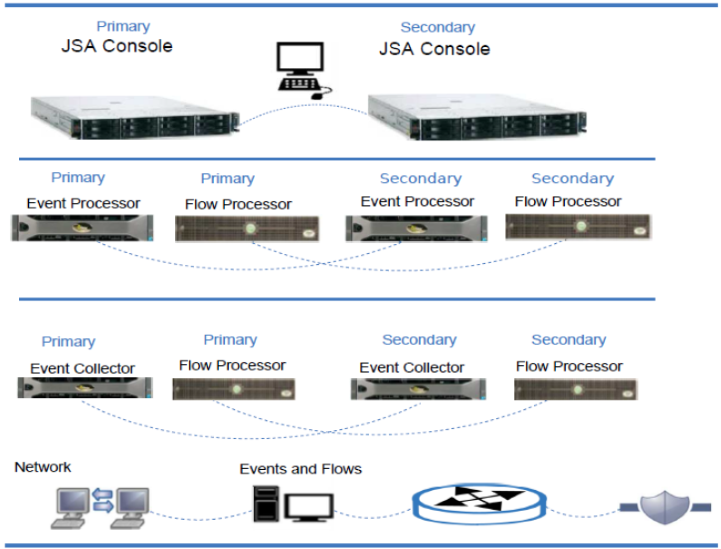HA Deployment Overview
Implement high availability (HA) in your JSA deployment to keep JSA functions running, if there is a hardware or software failure in your deployment.
By using high availability, you can continue to collect, store, and process event and flow data, if any failures occur.
To enable HA, JSA connects a primary HA host with a secondary HA host to create an HA cluster.
The following diagram shows a basic HA setup.

HA Overview
In an HA deployment, you install and configure a second appliance that takes over the role of the device, if the primary appliance fails in one of the following scenarios:
A power supply failure
A network failure that is detected by network connectivity tests
An operating system malfunction that delays or stops the heartbeat ping tests
A complete RAID failure on the primary HA host
A manual failover
A management interface failure on the primary HA host
For best performance in large deployments it is strongly recommended to use a 10 Gbps interface for your HA Crossover. Using a 10 Gbps interface reduces the time needed for system synchronization and ensures optimal performance of the pair. If you do not have a 10 Gbps interface available consider bonding multiple 1 Gbps interfaces for crossover.
For more information about HA, see the Juniper Secure Analytics High Availability Guide.
